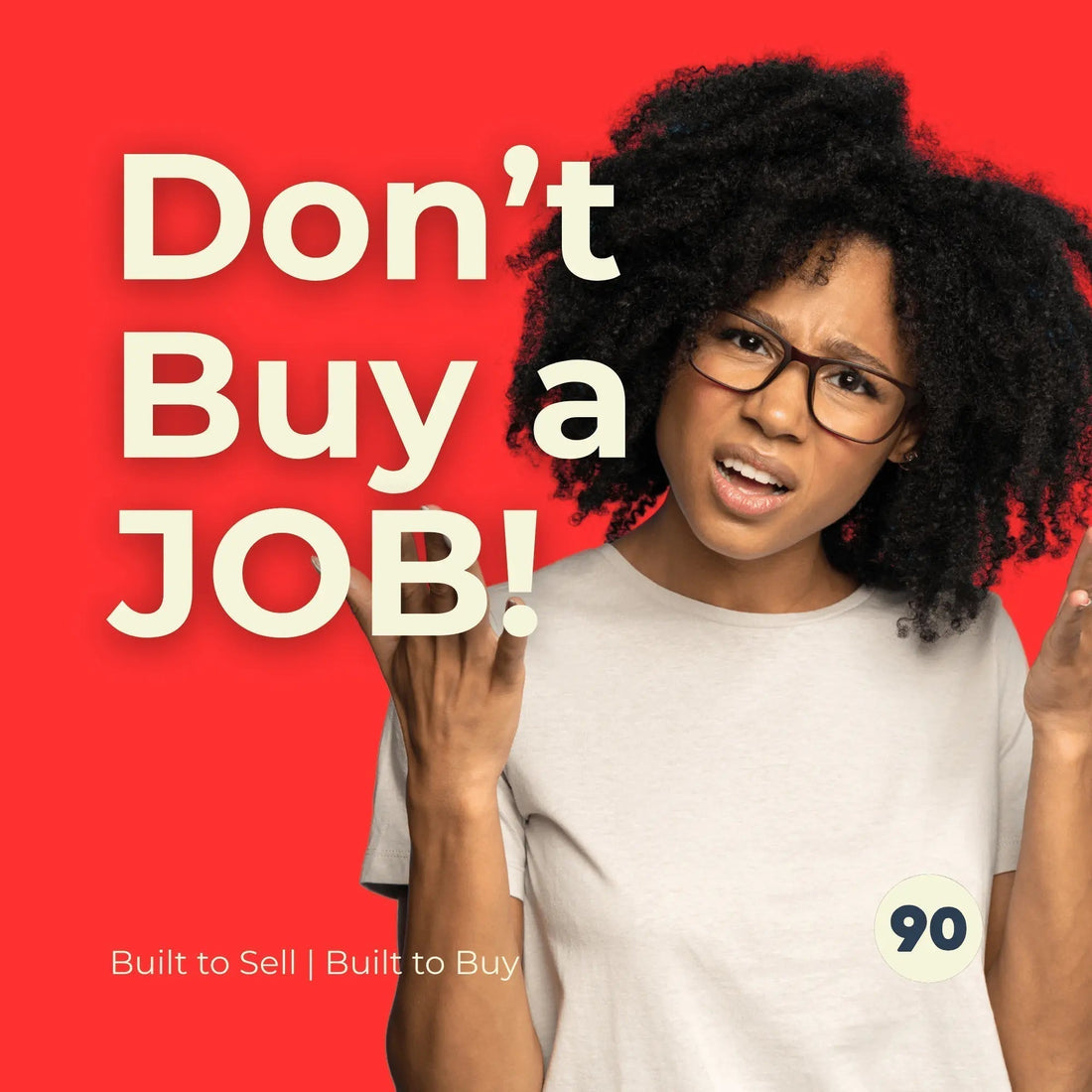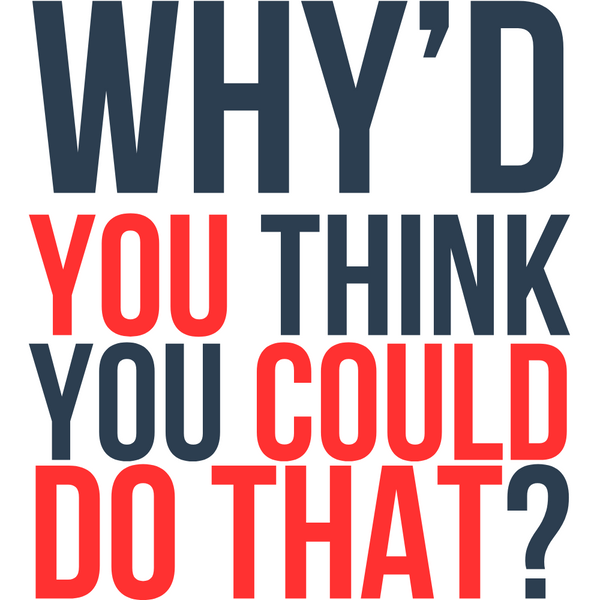
How to Spot an Owner-Independent Business (And Avoid Buying Yourself a Job)
Share
Download the Framework Article - The Owner-Independent Business
Listen to this episode on your favourite podcast platform
Built to Buy: How to Spot an Owner-Independent Business
When it comes to buying a business, most people think in terms of revenue, margins, or cash flow. But those numbers only tell part of the story. The true test of a business's strength — and its value — lies beneath the surface.
Ask yourself this: if the founder disappeared tomorrow, would the business survive? Would it continue to serve customers, fulfil orders, generate revenue, and grow?
If the answer is no, then what you’re looking at isn’t a business — it’s a trap. It’s a high-risk gamble masquerading as an asset. Because when you buy a business that relies heavily on its owner, you’re not acquiring freedom or leverage. You’re buying someone else’s full-time job.
This guide is for strategic, long-term thinkers — buyers who want to acquire sustainable, scalable businesses. It’s not just about avoiding costly mistakes. It’s about knowing what to look for, what to ask, and how to confidently evaluate whether the business can truly thrive without the founder at the centre.
This companion guide to the Built to Buy webinar includes:
- Traits of owner-independent businesses
- Red flags to spot early in the due diligence process
- Strategic questions to ask sellers
- A real-world valuation case study
- A walk-away test every buyer should apply
Let’s dive in.
Part 1: Why Owner Independence Matters
Every business has someone behind the curtain. But when the founder is the curtain — running everything, making every decision, and holding every relationship — you’re buying a house of cards.
The True Risk of Owner-Dependent Businesses
Many deals look great on paper. But post-acquisition, buyers often find themselves overwhelmed, disillusioned, or forced to rebuild operations from scratch because:
- Clients only trusted the founder.
- The team lacked autonomy.
- Processes lived in someone’s head, not in a system.
- Nothing could run without daily handholding.
This isn't just a pain — it's a direct financial risk.
When a business can't function without its founder:
- The transition post-sale is rocky or fails.
- Performance drops as leadership, morale, and customer relationships falter.
- You spend months (or years) trying to stabilise instead of scaling.
And worst of all: the value you thought you were buying turns out to be smoke and mirrors.
Why Owner-Independent Businesses Win
Owner-independent businesses, on the other hand, are:
- Stable: They don’t rely on any one person to function.
- Scalable: With systems and structure in place, you can grow without everything flowing through you.
- Sellable: These businesses are easier to finance, de-risked, and attract higher-quality buyers.
As a buyer, these are the businesses that let you step into ownership with confidence and clarity.
Part 2: What to Look For
Spotting an owner-independent business starts with pattern recognition. During discovery and due diligence, you’re listening for structure, not stories. You’re watching for process, not just personality.
Signs of Owner Dependence:
- Founder-centric relationships: All key clients deal directly with the owner.
- No delegation: Team members defer everything to the founder.
- No documentation: Processes are not written or standardised.
- Reactive environment: Operations depend on the owner's daily input.
- Blurred roles: No clear organisational chart or reporting structure.
These indicators suggest that if the founder steps away, the business loses its spine.
Red Flags During Discovery:
You’re not just hearing what’s said — you’re paying attention to what’s missing:
- The seller insists on being present in all meetings with team members.
- Answers about how things work are vague or overly anecdotal.
- The team can’t explain how success is measured.
- There’s no succession plan, transitional support, or leadership pipeline.
These red flags are more dangerous than a temporary revenue dip — they suggest cultural and structural risk that’s much harder to fix.
Traits of an Owner-Independent Business:
- Systems, not superheroes: Business functions are governed by clear SOPs.
- Empowered leadership: Managers or leads make day-to-day decisions.
- Process visibility: Sales, onboarding, operations, and finance are documented.
- Cultural clarity: The business has shared values and a clear vision — not just a founder-centric identity.
- Resilience: The business has weathered change — without the founder needing to step back in.
When you find a business with these traits, it’s worth looking closer.
Part 3: Strategic Questions to Ask the Seller
Asking the right questions in due diligence is how you uncover the real structure of the business. Here are five powerful questions that reveal whether the business is truly owner-independent:
1. Who runs things when you’re away?
If the seller says “I never take time off,” you already have your answer.
2. What are your top 5 business processes — and are they documented?
You want to see actual SOPs — not just vague references.
3. What does your team do without your direct oversight?
Listen for clarity, structure, and examples of initiative.
4. How would your customers respond if you stepped away for a month?
Would they notice? Would they complain? Or would the team handle it?
5. What decisions are made without you?
True leadership exists when day-to-day decisions happen without the founder’s constant input.
Tip: Ask follow-up questions to test depth — “Can I see how your onboarding system works?” or “Would your ops lead be open to a conversation?”
Part 4: Valuation in Action – A Tale of Two Deals
Scenario A: Owner-Dependent Business
- EBITDA: $500,000
- Founder leads sales, marketing, and ops
- No SOPs
- Key clients deal directly with the owner
- Valuation multiple: 2x
- Valuation = $1,000,000
Scenario B: Owner-Independent Business
- EBITDA: $500,000
- Dedicated team handles delivery and support
- SOPs and training systems in place
- Weekly reporting without founder involvement
- Valuation multiple: 3.5x
- Valuation = $1,750,000
Takeaway: Same earnings. Very different value. Structure drives scalability — and valuation.
This isn’t theory. This is how investors and acquirers assess long-term risk and upside.
Part 5: The Walk-Away Test
Every buyer should use this simple test:
“If the seller walked away for 30 days tomorrow, would the business keep running — or start burning?”
This test simplifies everything:
- If the answer is no, there’s a serious risk.
- If the answer is maybe, negotiate accordingly or look for transitional support.
- If the answer is yes, you’re buying a machine — not just a job.
Pro tip: Use this question in meetings with the seller. Their reaction often tells you more than the answer.
Part 6: Buyer’s Recap Checklist
Use this checklist before making an offer:
✅ Operational systems documented and followed
✅ Defined org chart with distributed responsibilities
✅ Middle management or team leads in place
✅ KPIs tracked and visible across departments
✅ The business has run without the owner present for extended periods
✅ Clear transition plan or continuity structure post-sale
Buying a business with these foundations is not just safer — it’s far more scalable.
Final Words
You’re not just buying a business. You’re buying its architecture — the people, systems, and culture that make it function without you.
The best businesses don’t revolve around a single founder. They operate on rhythm, reporting, and responsibility.
Avoid the ego trap. Don’t let a charismatic seller or a big profit number blind you to the underlying reality.
If you want guidance through the process — whether you’re mid-deal, comparing opportunities, or just starting out — I help buyers like you assess risk, spot value, and buy with confidence.
👉 Book a call: Book Now
Let’s build something that works without you in the weeds.
— Sam Penny
Coach for the Brave. | Built to Sell | The Topify Method
Related Reads
- Top 5 Mistakes Investors Make When Buying a Business for Sale in Australia
- Due Diligence When Buying a Business: What Smart Buyers Always Check (But Most Don’t)
- How to Sell a Business in Australia: The Step-by-Step Owner's Guide
- How to Make Yourself Redundant: The Blueprint for Owner Independence with Nigel Hall
- Don’t Buy a Business Without This: The Investor’s Business for Sale Checklist



